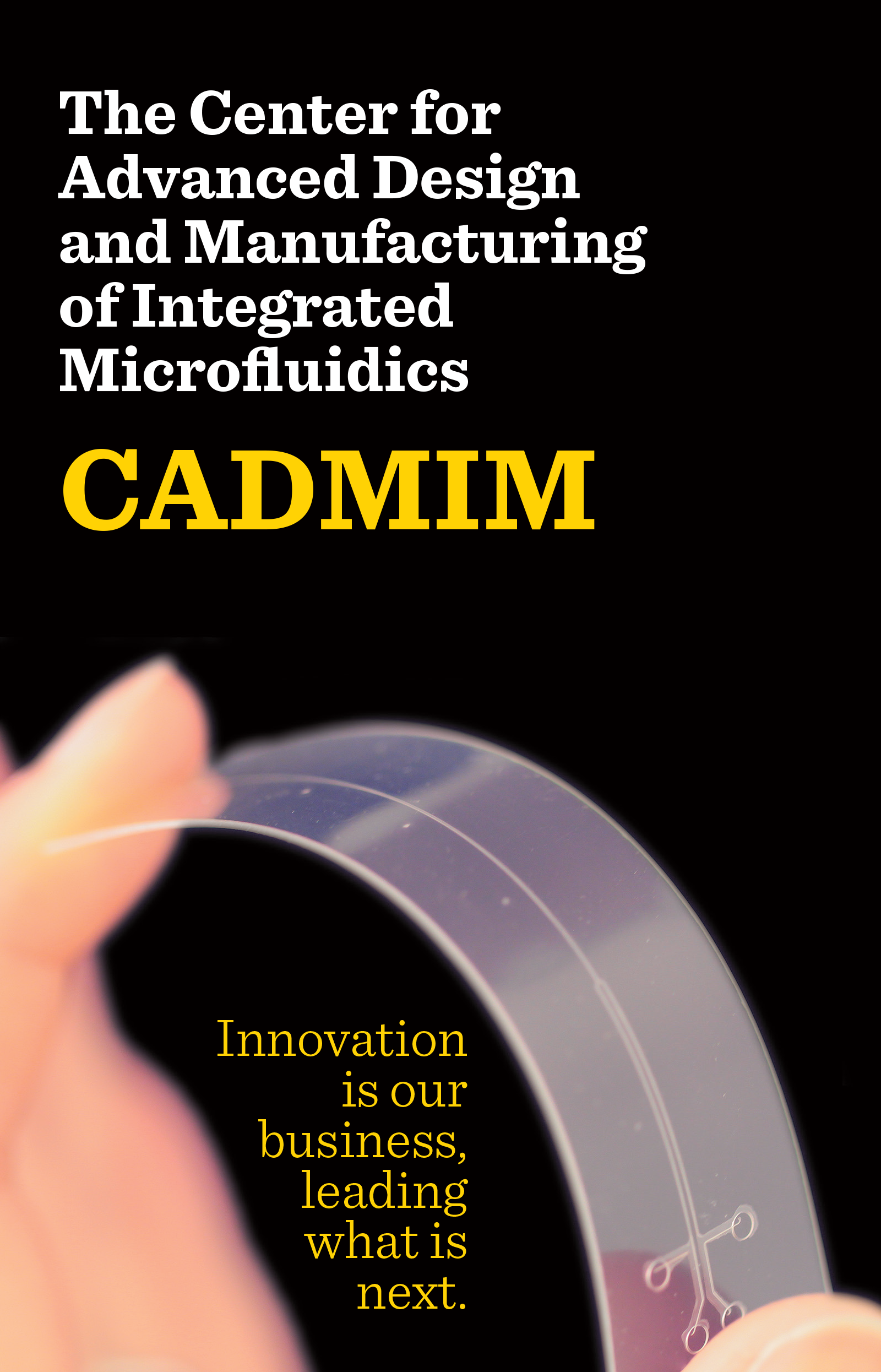 Aug. 8, 2016 - Research undertaken at the Samueli School’s Center for Advanced Design & Manufacturing of Integrated Microfluidics (CADMIM) is featured in a national publication listing groundbreaking technology projects.
Aug. 8, 2016 - Research undertaken at the Samueli School’s Center for Advanced Design & Manufacturing of Integrated Microfluidics (CADMIM) is featured in a national publication listing groundbreaking technology projects.
The 2016 National Science Foundation Compendium of Industry-Nominated Technology Breakthroughs of Industry/University Cooperative Research Centers includes a nod to an integrated microfluidic device developed at CADMIM.
The compendium lists projects embarked on by 33 Industry & University Cooperative Research Centers (I/UCRCs) nationwide expected to result in technological breakthroughs – process improvements or techniques, new products or services and/or benefits to the nation’s economy. The publication is intended to help Congressional and White House staffers, NSF visitors and the general public understand the impact of research taking place at the country’s I/UCRCs.
CADMIM, an I/UCRC created in partnership with the University of Cincinnati, is directed by Biomedical Engineering Professor Abe Lee. It is one of nearly 80 active I/UCRCs around the country involving approximately 180 universities and 775 industry partners.
CADMIM’s recognized project, an integrated microfluidic device that isolates and enriches rare cells from untreated liquid samples, advances diagnostic and therapeutic possibilities by combining two microfluidic components – each with its own advantages – into one device. The integrated device combines precise cell-sorting capabilities with rapid-purification capabilities, resulting in higher-quality cell isolation from complex mixtures. This allows users to more easily analyze complex samples like whole blood or untreated water.
Additionally, scalable production methods, easily transferrable to industry, are being developed for the fabrication of the devices. The microfluidic technology creates a miniature lab-on-a chip that facilitates portable use – homes, hospitals, crime scenes or anywhere point-of-care diagnosis is needed. Lee collaborated on the research with CADMIM Co-director Ian Papautsky from the University of Cincinnati.
“By facilitating discussions to match industrial need with academic innovation, the NSF I/UCRC provided the ‘perfect storm’ that resulted in the initial conceptualization of the device,” said Lee. “Encouraging our two labs – with dissimilar technologies – to integrate and complement each other resulted in a system with higher performance than what is out there. With initial success demonstrated, we are now embarking on a wide range of follow-on research projects.”
“This is particularly big achievement for CADMIM since our center is only two years old; most of the other centers are much older,” added Gisela Lin, CADMIM Center development manager. “Of the 33 I/UCRC’s featured in the 2016 compendium, the average center is eight years old.”
Now in its sixth edition, the compendium is intended to acquaint readers with how knowledge and technology in these centers are being discovered, developed and translated into commercial and industrial advances and applications. Projects under consideration were limited to work that was undertaken during the 2013-14 academic year and concluded by the end of 2015.
-- Anna Lynn Spitzer
